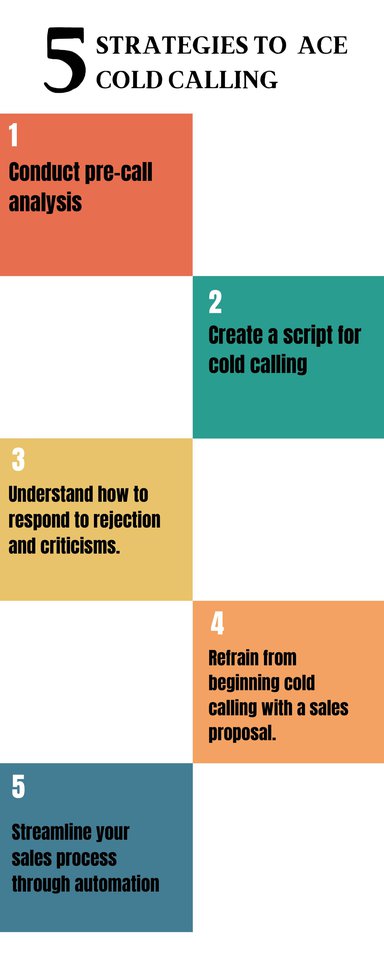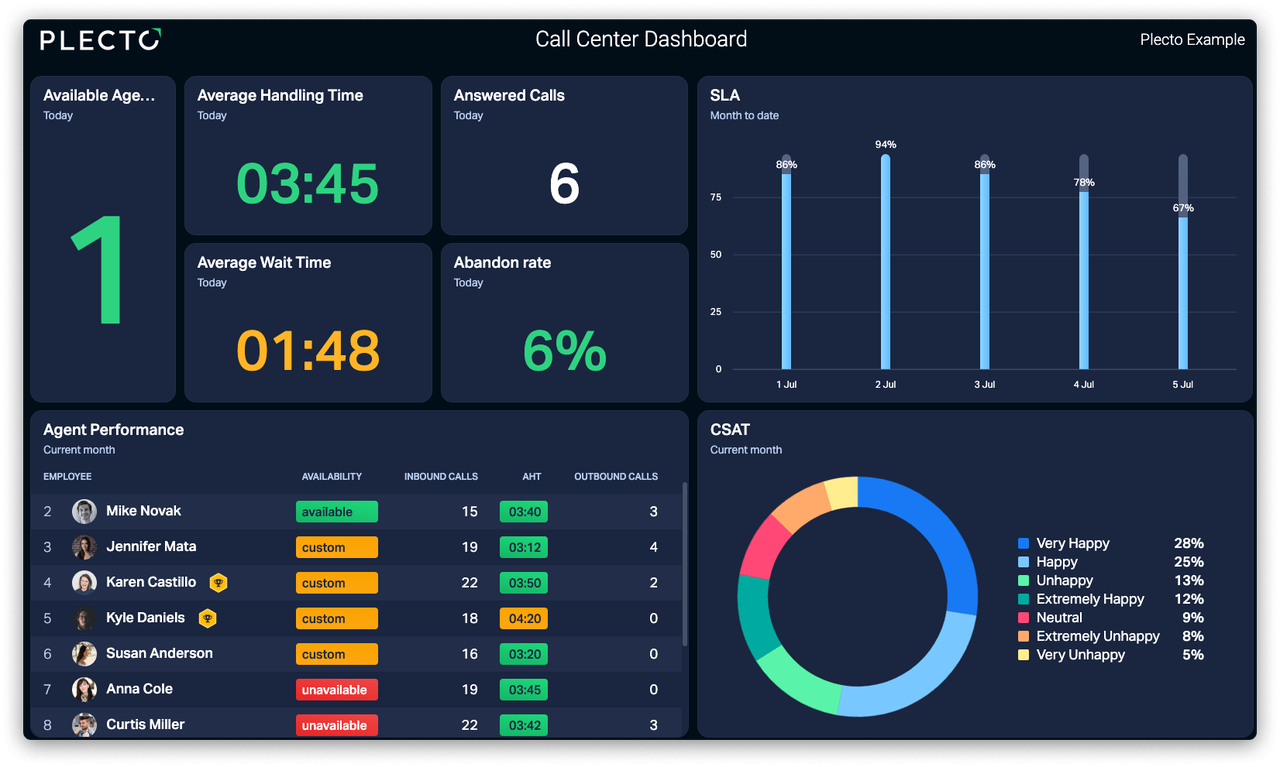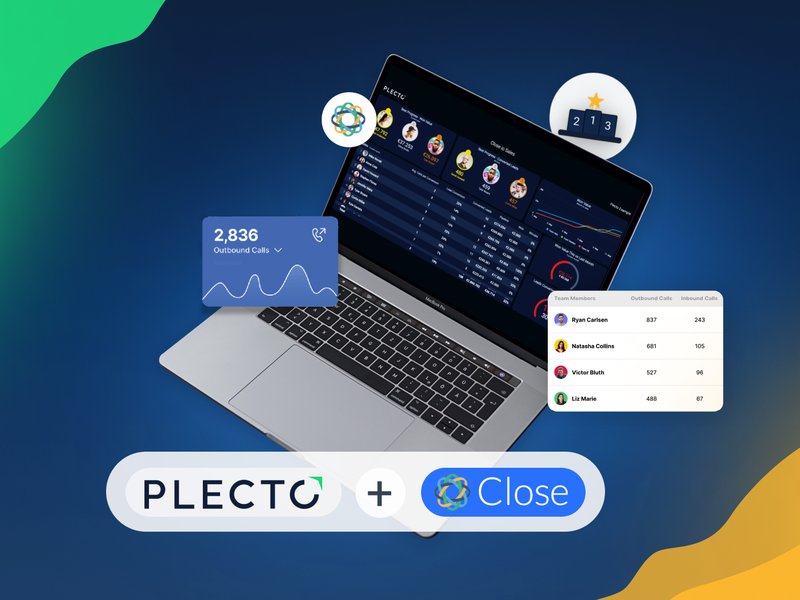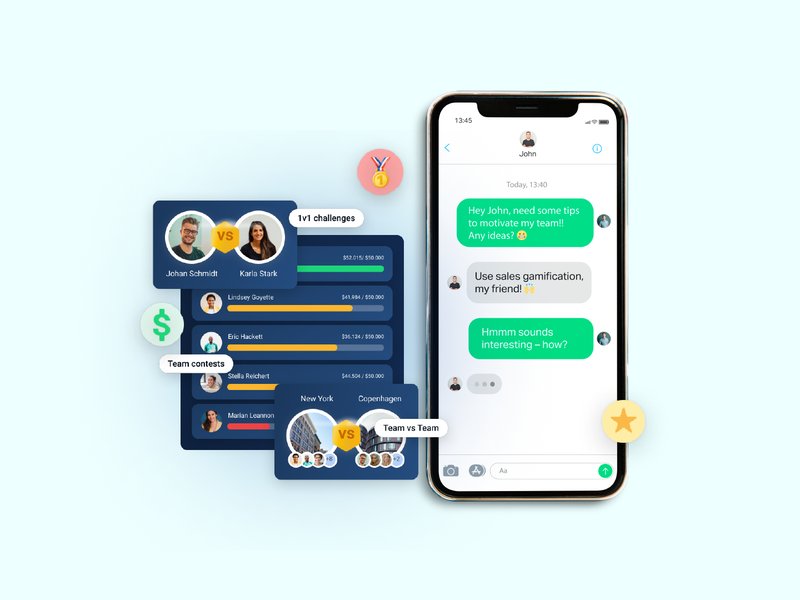Do you need help deciding between outbound and inbound sales for your business? Do you feel stuck between a rock and a hard place, wondering which approach will yield the best results? You're not alone. Many businesses grapple with this decision, and it's understandable why.
There are two primary methods used in sales: inbound and outbound.
Outbound sales are proactive. Outbound sales representatives approach prospective clients using cold calling, email marketing, or direct mail. The objective is to inform the client about the good or service and convince them to buy it.
On the other hand, getting customers who are already interested in what you have to give is the whole point of inbound sales. These prospective clients find you through various sources, including search engines, social media, or recommendations. The ultimate objective is to assist them in the purchasing process and win their loyalty.
Which strategy should you concentrate on? Well, that depends on several variables, including the nature of your company, your target market, and your business sector. It is essential to comprehend the distinction between incoming and outbound sales.
In this article, we'll delve into the importance of understanding the difference between inbound vs outbound sales and how it can impact your business. We'll also provide insights and strategies to help you make the right decision for your business. So, without further ado, let's dive in!
Inbound vs Outbound Sales: How Are They Different?
Let's talk about inbound sales vs outbound sales - two sides of the sales coin that use vastly different techniques. The biggest difference between them? It all starts with where the lead comes from.
Inbound sales are all about getting prospects to contact you. They might be interested in your products, have some queries, or be eager to buy immediately.
These individuals are already enthusiastic, involved, and prepared to go. In reality, an inbound-focused sales team typically outperforms an outbound-focused one in terms of success rates.
In contrast, outbound sales involve your team contacting potential clients. This usually means casting a wider marketing net and prioritizing quantity over quality.
Now, if you're like most people, you're probably thinking, "Inbound sales all the way! No one likes pushy sales tactics." And sure, inbound sales can feel less intrusive and more organic. But here's the thing: smart companies know there's value in both approaches.
By combining inbound and outbound strategies, you can create a well-rounded sales approach that brings in more customers, raises brand awareness, and ultimately drives more revenue.
Build your first dashboard.
Start your 14-day free trial today
Inbound Sales Strategies You Need To Know About
There are many tactics you can employ if you want to draw in and keep clients through inbound sales. Let's glance at a few of the most well-liked ones.
Content Marketing
First, content marketing is a potent tactic that produces educational and worthwhile content to attract prospective customers. This can be presented in various ways, including blogs, videos, infographics, and more.
Social Media Marketing
Social media marketing is another effective instrument for inbound sales. Given how much time users spend on social media platforms, it's a fantastic method to interact with prospective customers. Producing engaging content and communicating with your followers will help you establish a solid online profile and draw in new customers. Using a social media CRM tool can help businesses manage their interactions with customers on various social media platforms.
Email Marketing
Additionally, email marketing is still among the best methods to cultivate leads and turn them into customers. You may encourage your subscribers to make a purchase by using significant, specific email advertising to keep your brand in their minds.

Cold Calling
Believe it or not, cold calling can also be an effective inbound sales strategy if done right. Rather than randomly dialing numbers, you can use a telecalling CRM software to gather data on potential leads and track the telemarketing KPIs. You can now initiate calls that are more likely to result in a sale because they are more specific.
Inbound cold calling works wonders in converting cold leads and winning back churned customers. It's an excellent opportunity to engage with people who have already shown some interest in your products or services. By providing useful information and building a relationship with them, you can earn their trust.
One way to use this strategy is to follow up with leads who have visited your website or filled out a contact form but have yet to make a purchase. By giving them a call and answering their queries, you can move them closer to making a purchase.
Similarly, imagine you have a customer who has stopped doing business with you. There's a way to turn things around with inbound cold calling. By being proactive and reaching out to them, you can get their feedback and address any problems they may have had. By tailoring solutions that cater to their specific needs, you can win them back. When you take the time to really listen and show that you care about their satisfaction, you'll build a stronger bond with them. This can lead to greater loyalty and a better chance of them coming back for more.
How to Successfully Implement an Inbound Sales Strategy
If you want to succeed at inbound sales, you must be able to place yourself in your customers' shoes and fully understand their buying journey. Doing this allows you to design a sales process that successfully supports and directs them at every phase.
Let's break it down into the four key stages of the inbound sales process: capture, qualify, pitch, and close.
Attracting Ideal Customers
First, you need to identify your ideal customer profile (ICP) and consider their problems and pain points. Then, create content and resources to draw them in and encourage them to engage with your brand. This could include anything from blog posts and social media content to downloadable eBooks or whitepapers. Once you've captured their attention, you can then collect their information through a form on your website or other call-to-action.
Assessing Leads
In the qualifying stage, you'll want to determine whether the leads you've captured are a good fit for your business and your product. You can start by using automated qualification methods, like a simple question on your form that will help you gauge the size of your business or their level of interest. After that, you can engage in a discovery call with the lead to better understand their needs and whether your solution would be a good fit.
Presenting a Compelling Pitch
Now it's time to present a consultative sales pitch to the potential customer. This is your chance to demonstrate how your solution can solve their problem. At this stage, you'll want to use consultative selling, listening to the prospect's pain points and guiding them toward a solution that will help them. You may invite them or other relevant stakeholders to a meeting or product demo.
Closing the Deal
The final stage of outbound sales involves navigating how your prospect typically buys new products, selling all relevant stakeholders on your solution, and getting that contract signed. It's important to understand the buying process of your prospect and adapt your approach accordingly, whether that means a one-session close or a longer, multi-step process.
Outbound Sales Strategies You Need to Know About
Cold Calling
Yes, you can employ cold calling for outbound sales as well! Cold calling is among the oldest and most widely known outbound sales techniques. While many believe it's an outdated approach, it still has merit when used correctly. To make it work, pair it with other outreach methods and a strong marketing campaign. We've created an infographic outlining the seven keys to successful cold calling, and we've also got a guide on how to master the art of cold calling.

Cold Emailing
If cold calling seems too intrusive, try cold emailing. This budget-friendly approach involves sending cold emails of value or offers to potential customers to initiate contact. While it may have a different success rate than cold calling, it can still generate leads and is a less invasive approach.
Social Selling
Social Selling is incorporating social networks into every stage of the sales process. This approach allows sales professionals to engage with potential customers directly without relying on cold calls or gatekeepers. Social Selling doesn't replace traditional sales techniques but instead evolves them. It's an excellent way to build relationships and establish trust with potential customers.
How to Successfully Implement an Outbound Sales Strategy
Outbound sales involve reaching out to potential customers and convincing them to buy your product or service. Here is an overview of a typical flow for an outbound sale:
Prospecting: The Art of Building Targeted Lists
Building a list of potential customers can be a tedious task, but it's worth it! Instead of relying on generic demographics, use B2B data providers to identify specific individuals that match your ideal customer profile. With the right sales prospecting, you'll have valid contact information and email addresses, making it easier to engage in a sales conversation.
Outreach: Reaching Out Through Different Channels
Once you have your list, it's time to start reaching out to potential customers through phone calls, emails, and ads. The key is to get their attention and spark their interest in your product or service.
Qualifying: Assessing the Fit
Evaluating whether the prospect is a good match for your product or service is vital before you launch your sales pitch. By qualifying your prospects, you'll be able to focus on the ones that are most likely to convert, saving you time and resources in the long run.
Pitching: Creating a Compelling Story
Now that you've identified the right prospects, it's time to create a compelling story that resonates with them. Your pitch should be all about painting a vivid picture of how your product or service can help solve their pain points and improve their lives.
Objection Handling: Addressing Concerns and Building Trust
Even the most qualified prospects will likely have some concerns or objections that need to be addressed before they're ready to buy. By showing them the value of your solution and building trust, you can overcome objections and move them closer to a buying decision.
Closing the Deal: Asking for the Sale
Closing the deal is all about asking for the sale. Don't be afraid to be direct and ask what it will take to turn them into a customer. By embracing the "no" and persevering, you'll be able to close more deals and grow your business.
Outbound vs Inbound Sales: How to Combine the Two?
By now we hope you would have understood the whole concept of outbound vs inbound sales. But what if you combine both strategies? The potential for success is immense!
In the world of sales, you can't afford to put all your eggs in one basket or scatter them across every possible basket. To succeed, you need to strike a balance between inbound and outbound sales strategies that work in tandem to bring in more leads and close more deals.
To do this, you must create detailed customer profiles that help you understand who your best prospects are and what makes them tick. Armed with this knowledge, you can gather data on their behavior and preferences, using analytics and research tools to fine-tune your approach.
Data alone, however, is not everything. To convert those prospects into leads and seal the deal, you also need the appropriate technology. This is where customer relationship management (CRM) and sales engagement platforms come into play.Put together, these tools enable you to streamline your sales process and concentrate on what counts most: forging relationships with your customers and landing more sales.
So, what are you waiting for? Start combining your inbound and outbound sales strategies today and watch your business soar!
To Sum It Up
So, here's the deal - the great debate between outbound vs inbound sales rages on. Both techniques are fundamentally different from the other. What matters most is how well you implement your strategy. Nowadays, it’s advisable to adopt both strategies instead of choosing one over the other. This allows you to maximize your effectiveness and reach a larger audience. Furthermore, a comprehensive sales strategy can do wonders for brand awareness and revenue. If you want to step up your game, we recommend employing top-notch customer relationship management (CRM) software. It helps you streamline your sales process and makes everything work more smoothly.
With an in-depth understanding of inbound vs outbound sales and some successful strategies up your sleeve, you'll be able to outperform your competitors and pave a path toward success.
Armed with over two years of experience, Deepti creates content that's not only captivating but also search engine-friendly. Her writing skills are as versatile as her curiosity, as she jumps at every opportunity to learn and grow. With a sharp eye for SEO, she knows how to create content that captures attention and climbs up the ranks. Deepti's portfolio covers a broad range of topics, from tech to sales and beyond. Notably, she has written for companies like TeleCRM that streamline businesses' sales processes. Outside of writing, she's always up for an adventure, exploring new places, or delving into a good book while sipping a cup of warm coffee.




